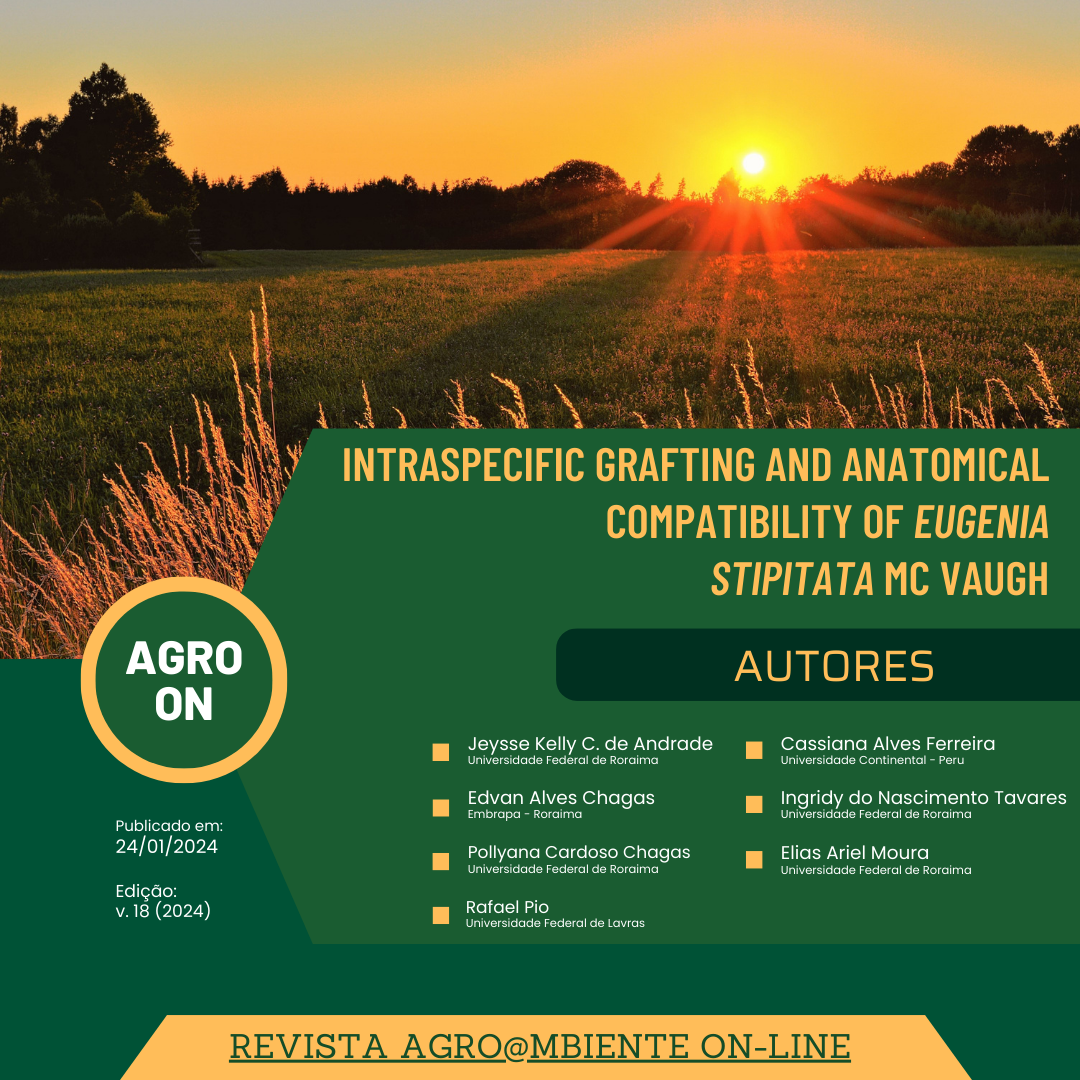Intraspecific grafting and anatomical compatibility of Eugenia stipitata Mc Vaugh
DOI:
https://doi.org/10.18227/1982-8470ragro.v18i00.7821Palavras-chave:
Anatomical analysis. Grafting. Eugenia stipitata. Vegetative propagation.Resumo
The E. stipitata is a native fruit tree from the Amazon, currently in the domestication phase due to its high nutritional and economic potential. In this process, studies aiming at the technical feasibility of propagating materials with desirable agronomic qualities are necessary but still incipient. Thus, the objective of this study was to evaluate different grafting methods forE. stipitata propagation and the compatibility between scion and rootstock using anatomical analysis as a tool. For the experiment, a randomized block design was used in a split-plot scheme over time, with three replications. The plots consisted of three grafting types: cleft grafting, side-veneer grafting, and budding. The subplots were four evaluation times: 30, 60, 90, and 120 days after grafting (DAG). The evaluated variables were the grafting success rate, the number of shoots per graft, shoot length, and shoot diameter. There was a significant interaction between the factors under study. During the experimental period, an increasing grafting success rate and the number of shoots emitted were observed for budding, although with a low success rate. Through cleft grafting, there was a complete loss of shoots at 120 DAG, leading to the subsequent death of all tissues. Budding grafting appears as a promising method for E. stipitata propagation, demonstrating vascular tissue connection feasibility, although this effect did not reflect in the grafting success rate.

Downloads
Publicado
Edição
Seção
Licença
Copyright (c) 2024 REVISTA AGRO@MBIENTE ON-LINE

Este trabalho está licenciado sob uma licença Creative Commons Attribution-NonCommercial-NoDerivatives 4.0 International License.
Declaro em meu nome e em nome dos demais autores que aqui represento no ato da submissão deste artigo, à REVISTA AGRO@MBIENTE ON-LINE que: • 1. O conteúdo do artigo é resultado de dados originais e não publicados ou submetidos a outros periódicos. • 2. Além do autor principal, todos os co-autores participaram suficientemente do trabalho para tornar públicas as respectivas responsabilidades pelo conteúdo. • 3. Em caso de aceitação do artigo, os autores concordam que os direitos autorais a ele referentes se tornarão propriedade exclusiva da Revista Agro@mbiente On-line, vedada qualquer reprodução, total ou parcial, em qualquer outra parte ou meio de divulgação, impressa ou eletrônica, sem que a prévia e necessária autorização seja solicitada e que, se obtida, devem constar os agradecimentos à Revista Agro@mbiente On-line do Centro de Ciências Agrárias/UFRR.


